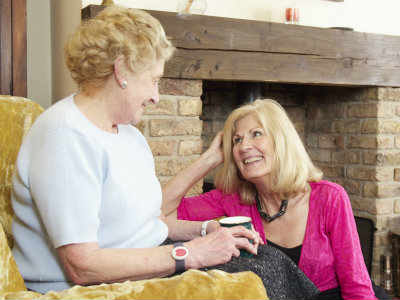
Access to telecare varies significantly across the country despite its potential to promote independence for people and deliver savings for councils, a national audit has found.
The number of people receiving telecare in English local authorities in 2011-12 ranged from 75 to 12,015 with a mean average of 2,345, while spending on the service ranged from £623 to £4.3m, with an average of £500,529, found the survey by the Good Governance Institute.
While the institute said part of the variation could be explained by differences in need, the findings also showed that some areas had failed to prioritise telecare. Councils used different eligibility criteria for telecare, with some rationing access according to Fair Access to Care Services (FACS) bands and others making it available as a preventive service to people who were not FACS eligible.
The survey, answered by 121 of England’s 152 councils, also revealed a “mixed understanding” of what constituted telecare among councils. For example there was disagreement among respondents as to whether to class community alarms – which enable people to call for help following a fall – as a form of telecare.
The institute said this reflected a lack of a clear definition of what constitutes telecare. It called on the Department of Health to develop a commissioning support pack for councils on telecare, including a “detailed and agreed definition”, and also provide guidance on access to telecare as part of its planned development of a new social care assessment and eligibility framework.
Despite evidence of telecare’s potential to deliver savings for councils, 60% of respondents had not assessed the impact of the financial impact of telecare, while 47% had not assessed its impact on outcomes for service users.
“An ageing population coupled with fiscal constraints means that new ways of funding and commissioning social care need to be explored and initiated, including the use of telecare services,” said institute chair Dr John Bullivant. “Despite the government’s commitment to increase the uptake of telecare and telehealth, access to these services varies greatly across the country.”
- The Good Governance Institute works with health and social care organisations to improve the way they are governed and also works to develop good practice in governance. This report was funded by an educational grant from telecare provider Tunstall Healthcare.
Related articles
Training social workers to spot telecare needs ‘will cut costs’


 Bournemouth, Christchurch and Poole
Bournemouth, Christchurch and Poole  Hampshire County Council
Hampshire County Council  Lincolnshire County Council
Lincolnshire County Council  Norfolk County Council
Norfolk County Council  Northamptonshire Children’s Trust
Northamptonshire Children’s Trust  South Gloucestershire Council
South Gloucestershire Council  Wiltshire Council
Wiltshire Council  Wokingham Borough Council
Wokingham Borough Council  Children and young people with SEND are ‘valued and prioritised’ in Wiltshire, find inspectors
Children and young people with SEND are ‘valued and prioritised’ in Wiltshire, find inspectors  How specialist refugee teams benefit young people and social workers
How specialist refugee teams benefit young people and social workers  Podcast: returning to social work after becoming a first-time parent
Podcast: returning to social work after becoming a first-time parent  Podcast: would you work for an inadequate-rated service?
Podcast: would you work for an inadequate-rated service?  Family help: one local authority’s experience of the model
Family help: one local authority’s experience of the model  Workforce Insights – showcasing a selection of the sector’s top recruiters
Workforce Insights – showcasing a selection of the sector’s top recruiters 

 Facebook
Facebook X
X LinkedIn
LinkedIn Instagram
Instagram
Comments are closed.